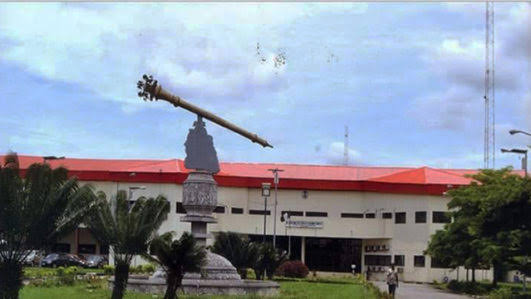The global teacher shortage is an increasingly pressing issue, affecting education systems worldwide. As the demand for quality education rises, the supply of qualified teachers is failing to keep pace, leaving schools with critical staffing gaps. This shortage impacts not only students but also places additional strain on the education system, leading to larger class sizes, reduced quality of instruction, and burnout among the remaining teachers. To address this crisis effectively, it is essential to understand its root causes, assess its impacts, and explore potential solutions.
The Current State of the Global Teacher Shortage
According to the most recent data from the Universal Basic Education Commission (UBEC) in 2024, Nigeria has over 1,686,535 teachers currently serving in pre-primary, primary, and junior secondary schools. However, the situation is more alarming on a global scale. The UNESCO Institute for Statistics reports that by 2030, the world will need an additional 69 million teachers to meet global education goals. Of this figure, 24 million teachers will be needed for primary education and 44 million for secondary education.
The shortage is particularly acute in developing regions such as sub-Saharan Africa and South Asia, where high birth rates, rapid population growth, and underfunded education systems exacerbate the problem. Yet, even wealthier nations are struggling to recruit and retain teachers, especially in subjects such as STEM (Science, Technology, Engineering, and Mathematics) and in rural or disadvantaged areas.
Causes of the Teacher Shortage
The causes of the teacher shortage are complex and multifaceted, varying depending on region and specific circumstances. However, several key factors can be identified:
1. Low Pay and Job Satisfaction
In many countries, teaching remains a low-paying profession, especially when compared to other fields requiring similar levels of education and expertise. Despite the crucial role teachers play in shaping the future, their compensation often fails to reflect the importance of their work. Low pay discourages potential educators from entering the profession and prompts existing teachers to leave for more lucrative opportunities in other sectors.
Moreover, poor working conditions, such as overcrowded classrooms, lack of resources, and excessive administrative burdens, contribute to low job satisfaction. Teachers are often required to take on additional responsibilities beyond their core duties, such as preparing curricula and managing student behaviour, which can lead to burnout when paired with inadequate compensation.
2. Increased Student Enrolment
In many regions, rising birth rates and expanded access to education have led to increased student enrolment. While this is a positive development, it puts significant pressure on education systems to accommodate more students. Without a corresponding increase in the number of teachers, class sizes grow larger, affecting both students and teachers. This increasing demand for education is one of the main drivers of the teacher shortage, especially in developing countries.
3. Ageing Workforce and Retirements
The ageing teacher population is another factor contributing to the shortage. In many countries, a large proportion of the current teaching workforce is nearing retirement, and there are not enough new teachers entering the profession to replace them. This demographic trend is particularly pronounced in developed countries, where a significant number of teachers hired during post-war population booms are now reaching retirement age.
4. Lack of Support and Professional Development
Many teachers report feeling unsupported in their roles, both in terms of professional development and emotional well-being. Inadequate training and limited professional development opportunities can leave teachers feeling ill-equipped to manage the demands of modern classrooms. This is particularly problematic given the rapid evolution of educational technologies and teaching methods.
Additionally, teachers often face significant mental and emotional stress due to challenging classroom environments, unrealistic expectations, and inadequate support systems. This contributes to higher attrition rates, as many educators leave the profession prematurely.
Impacts of the Teacher Shortage
The teacher shortage has far-reaching consequences, affecting individual schools and broader societal outcomes. Some of the key impacts include:
1. Larger Class Sizes
As teacher numbers decline, class sizes inevitably increase. Larger classes present numerous challenges, including less individualised attention for students, increased classroom management difficulties, and a reduction in overall educational quality. It becomes particularly challenging for teachers to meet the diverse needs of students, including those with learning disabilities.
2. Lower Student Achievement
There is a clear correlation between teacher quality and student outcomes. In schools struggling to fill teaching positions, the reliance on less qualified or inexperienced teachers can negatively impact student achievement. Research has shown that students in schools facing teacher shortages often perform worse on standardised tests and are more likely to experience learning gaps.
3. Teacher Burnout
The teacher shortage places additional pressure on those who remain in the profession, often requiring them to take on heavier workloads and more responsibilities. This can lead to burnout, which in turn contributes to higher teacher turnover rates. High turnover disrupts the continuity of instruction and further strains the education system.
4. Inequities in Education
The teacher shortage disproportionately affects students in low-income, rural, and disadvantaged communities. Schools in these areas often struggle to attract and retain qualified teachers, leading to widening gaps in educational quality. This perpetuates cycles of poverty and inequality, as students in underfunded schools are less likely to receive the education they need to succeed.
Potential Solutions to the Teacher Shortage
Addressing the teacher shortage requires a multifaceted approach involving government policies, school-level interventions, and societal changes. Some potential solutions include:
1. Increasing Teacher Pay
One of the most direct solutions is to raise teacher salaries, making the profession more attractive to prospective educators. Competitive pay can also help retain current teachers, reducing turnover and ensuring schools are staffed with experienced, qualified professionals.
2. Improving Working Conditions
To retain teachers, it is important to improve working conditions. This includes reducing class sizes, providing adequate resources, and minimising administrative burdens. Ensuring teachers have access to modern teaching tools and technologies can make their jobs more manageable and rewarding. Furthermore, fostering supportive environments where teachers feel valued and respected is crucial in combating burnout and low job satisfaction.
3. Enhancing Professional Development
Ongoing professional development is essential for teachers to stay current with best practices and new technologies. Governments and school districts should invest in regular training programmes to help teachers continuously improve their skills. Additionally, mentorship programmes for new teachers can reduce early-career attrition by offering much-needed guidance and support.
4. Expanding Alternative Certification Programmes
Alternative certification programmes offer flexible pathways into the teaching profession for individuals from non-traditional backgrounds. These programmes can help fill gaps in subjects like STEM and special education, providing a quicker route for career-changers or subject experts to enter the classroom.
5. Addressing the Digital Divide
In regions with severe teacher shortages, technology can help bridge the gap. Online learning platforms, remote teaching solutions, and digital tools can provide education to underserved areas. However, addressing the digital divide is crucial to ensure all students have access to necessary technology and internet connectivity.
Conclusion
The global teacher shortage is a complex issue that requires a coordinated effort to resolve. While there is no single solution, addressing the underlying causes—such as low pay, poor working conditions, and lack of support—can help alleviate the problem. Proactive steps must also be taken to attract new talent to the teaching profession and equip teachers to handle the challenges of modern education.















